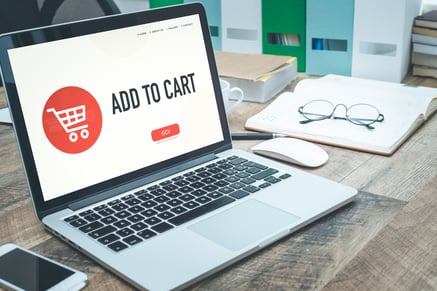Retail Conversions in Today's Marketplace
In the past, retailers had always seen delivery as something boring that ‘had’ to happen after the real work (i.e. the transaction) had occurred. Delivery from store was something pretty much unheard of and was handled, in niche cases, by a shop assistant physically delivering items to high value customers. Delivery from online channels has existed for many years; however, it was (and in many cases still is), something that is handled with ‘heavy logistics’: next day, un-timed (at best) delivery from out of town warehouse, traditional fulfilment via a well-known national carrier, etc.
Conversions, and reducing cart abandonment, both online and in-store, are at the forefront of retailers’ minds - however large or small they are. Just because a shopper is browsing online or in-store, doesn’t mean that they will buy any of the items they are looking at, or even holding. Due to the vast choices they now have, shoppers are becoming more and more demanding when it comes to the value that needs to be transferred from the retailer to them to drive them to convert.
Shopping is no longer a siloed experience for modern shoppers – it is an activity that is part of their day in between work, meeting up with friends, sightseeing, etc. The prospect of being burdened with shopping bags can often lead to in-store basket abandonment – in many cases without retailers even realising.

One of the first retail conversations that I had when we started Brisqq was with the multichannel director of a high-end menswear brand, in which I suggested that our in-store solution - enabling his customers to not have to carry bags, would make perfect sense for the brand and would increase conversions in the store. He responded bluntly, saying “my customers never ask our staff for such a service” – why would they? Delivery is boring, and a means to an end, right?
I managed to eventually persuade the brand to test our solution and visited their stores to explain the solution to the store staff who subsequently positioned it to their customers – sometimes during (while speaking with customers as they help them in-store) and sometimes at the end of their shopping experience (at the checkout). Uptake was strong and customer feedback was very positive – in fact, many customers did not want to carry their bags – they were going back to work, visiting friends or sightseeing. They were comfortable spending more money with a brand who understood their needs as shoppers and ultimately, our solution stopped them abandoning their baskets and ‘coming back later’ (they usually don’t!)
We’ve all gone into a shop, seen an item we like but wanted it in a different colour or size than was available from the shop at that time. If it is a shop with multiple outlets in London, usually the best a brand can do is to check the stock level in another store and point the customer in that direction. The issue here is that customers may not want to go to that other store: this could lead to them abandoning their purchase. What retailers need is to be able to seamlessly transfer that item to a convenient store of their customers’ choice in a way that works for the customer (i.e. the customer can track the item as it makes its way to the store and will receive a notification when it arrives). Then, they can go to that convenient store and purchase the item – the customer wins, as does the retailer (because they don’t lose the transaction to another brand).
Customers are looking for choice these days when it comes to fulfilment, be that online or in-store. They want to be able to pick a 1-hour slot for delivery, track their delivery on a map as it makes its way towards them, and be assured of the quality of service by being able to rate the delivery. If the choices align with their requirements and lifestyles, holding constant for liking the product, they’re more likely to convert in your store (online or bricks and mortar) than in your competitor’s.




